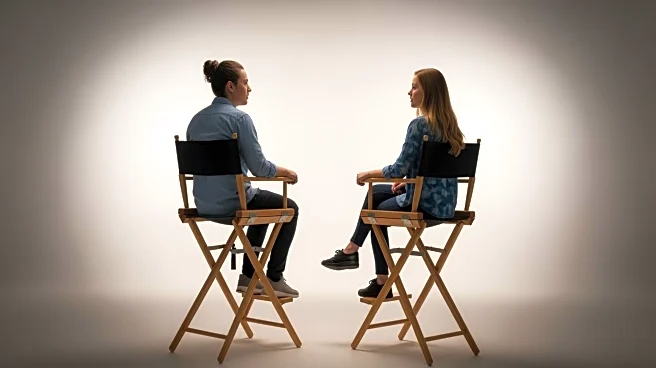What's Happening?
Netflix has released the second season of 'Nobody Wants This,' a show that delves into the complexities of interfaith relationships. The first season was praised for its portrayal of Jewish life but also
faced criticism for its depiction of Jewish women and the superficial treatment of Jewish practices. Adam Brody stars as Rabbi Noah Roklov, a central character navigating the challenges of interfaith dynamics. The show aims to bring these dilemmas to the forefront, offering viewers a nuanced look at the cultural and religious intersections in modern relationships.
Why It's Important?
The release of 'Nobody Wants This' Season 2 is significant as it continues to explore the often underrepresented topic of interfaith relationships on mainstream media. By addressing these themes, the show contributes to broader discussions about cultural diversity and religious tolerance. It provides a platform for viewers to engage with the complexities of maintaining personal beliefs while respecting those of a partner from a different faith. This can foster greater understanding and dialogue around interfaith dynamics, potentially influencing societal attitudes towards religious and cultural integration.
What's Next?
As the show progresses, it is likely to further explore the intricacies of interfaith relationships, potentially sparking conversations among viewers and critics alike. The portrayal of these relationships may lead to increased awareness and sensitivity towards the challenges faced by couples in similar situations. Additionally, the show's reception could influence future programming decisions by Netflix and other networks, encouraging them to produce content that reflects diverse cultural and religious experiences.
Beyond the Headlines
The show's exploration of interfaith relationships may also have deeper implications for how media represents religious and cultural diversity. By highlighting these themes, 'Nobody Wants This' could contribute to a shift in how television narratives address complex social issues, encouraging more inclusive storytelling that resonates with a wider audience. This could lead to a broader acceptance and understanding of interfaith dynamics in real life, promoting a more harmonious coexistence among different cultural and religious groups.












